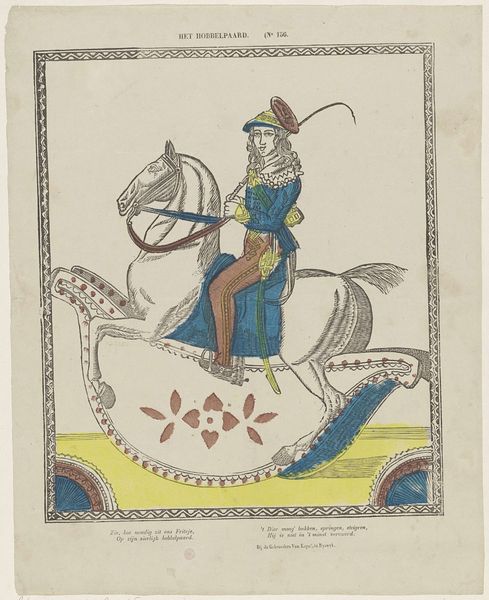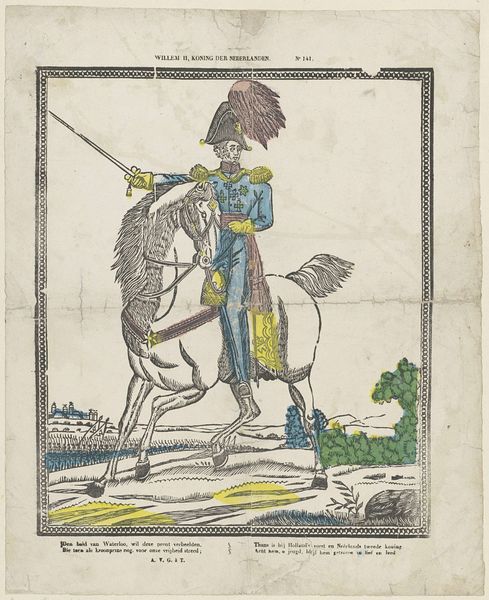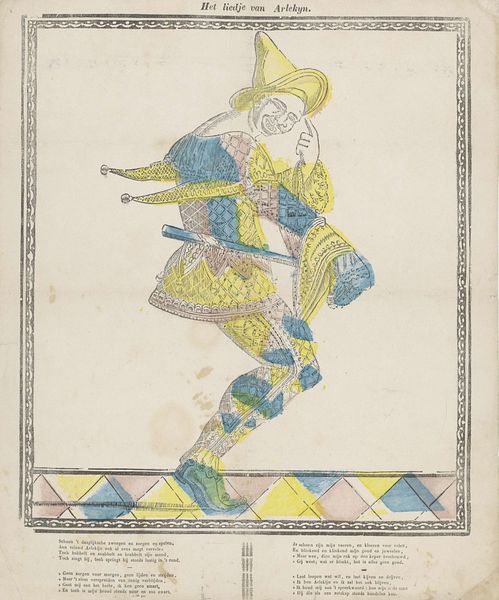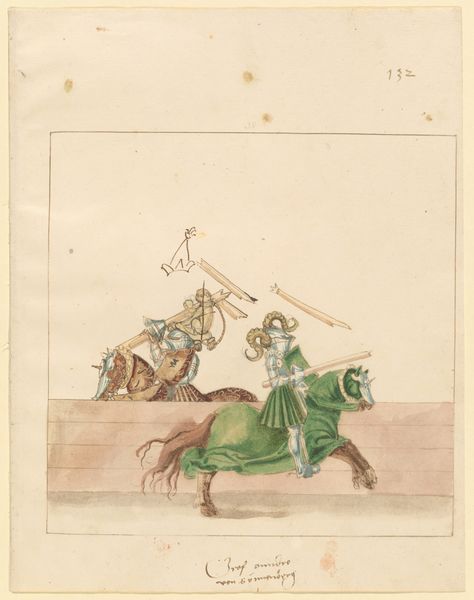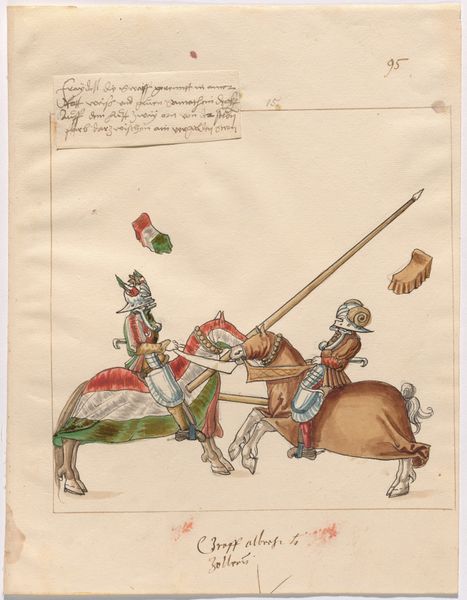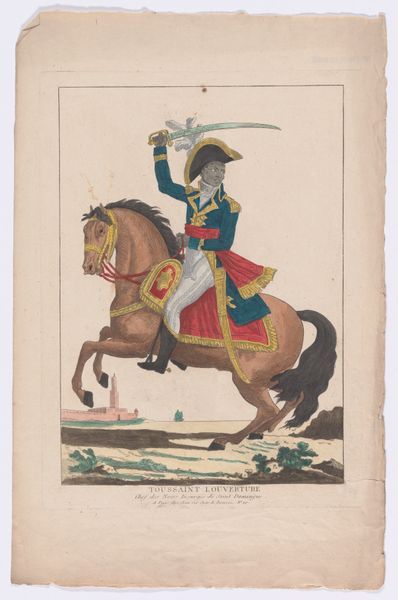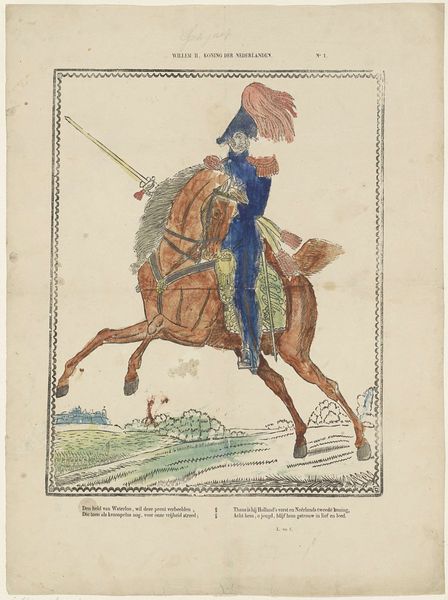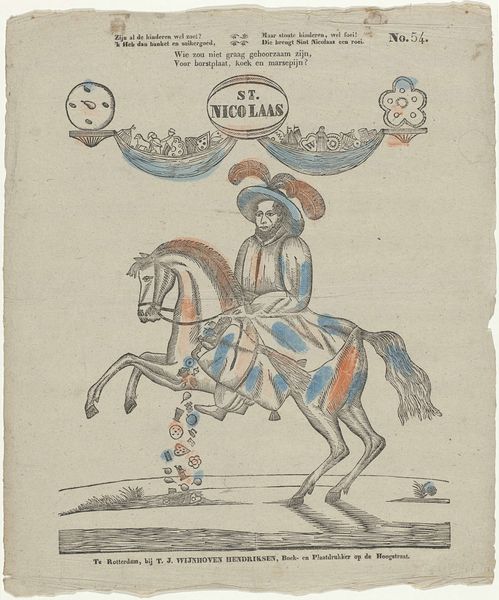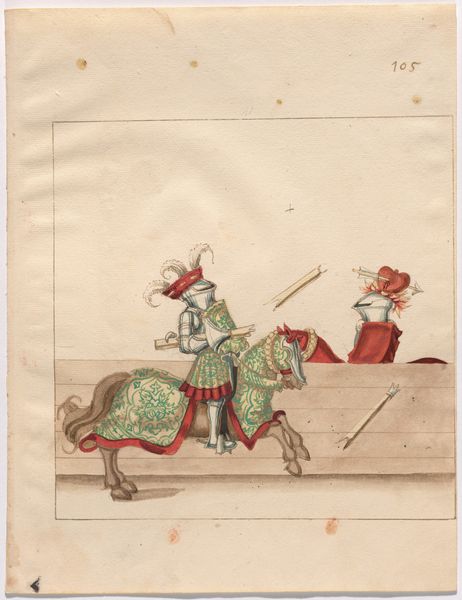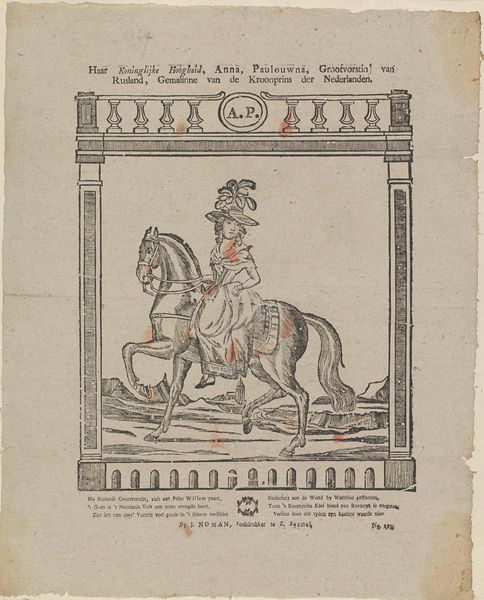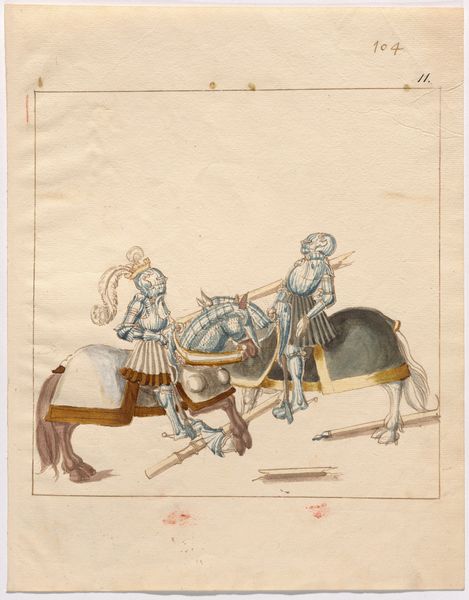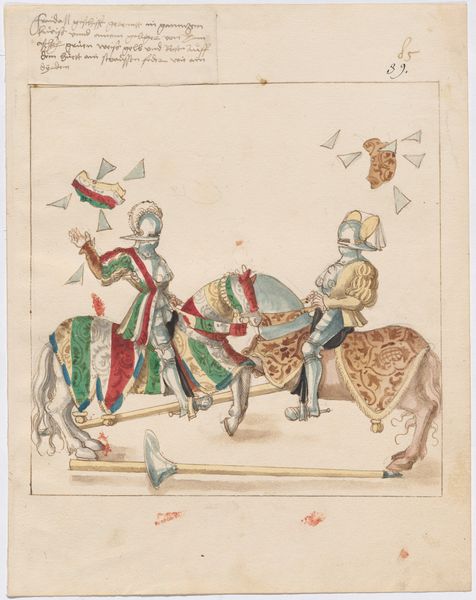
drawing, print, paper, watercolor, ink
#
drawing
#
blue ink drawing
# print
#
figuration
#
paper
#
watercolor
#
ink
#
sketchbook drawing
#
watercolour illustration
#
genre-painting
Dimensions: height 395 mm, width 335 mm
Copyright: Rijks Museum: Open Domain
Curator: This drawing, known as "Het hobbelpaard," which translates to "The Rocking Horse," comes from the period between 1833 and 1856, attributed to Glenisson & Van Genechten. It employs a range of media including ink, watercolor, and print on paper. Editor: The first thing that strikes me is the constrained feeling. The colors, while present, seem hesitant, as if applied after the initial drawing with some uncertainty. Curator: I think that hesitancy speaks volumes about childhood in this era. Note how the rider, in elaborate, almost theatrical clothing, embodies both power and play. The rocking horse itself becomes a vehicle for not just amusement, but also perhaps, early lessons in social rank and presentation. Editor: Absolutely, and let's not forget the tradition of equestrian portraiture of nobles. This echoes back to classical sculpture but now tamed to a child’s size. The whole artwork feels like a cultural exercise – carefully controlling youthful spirit into socially accepted molds, so it reveals the politics behind childhood and display during that era. Curator: Precisely. Look at how the toy echoes the design and purpose of actual steeds, signifying continuity between the innocent game and later participation in the dominant order. The child isn't just playing, but also learning a system of status. Editor: This links to cultural memory, doesn’t it? Toys that educate subconsciously by incorporating signs, traditions and symbols reflecting a desired social structure and order. In this instance, power is translated into form and imbued on a childhood game. Curator: Exactly. While seemingly simple, “The Rocking Horse” acts as a complex time capsule – layering childhood, social education, and an entire world of hierarchical values. Editor: Thinking about it that way offers a new insight. I initially read it as constrained, but seeing these symbolical connections actually demonstrates how it represents social and cultural conditioning in art. Curator: Indeed. It’s in understanding this intricate symbolic code, we begin to unpack the artwork's lasting meaning and effect.
Comments
No comments
Be the first to comment and join the conversation on the ultimate creative platform.
